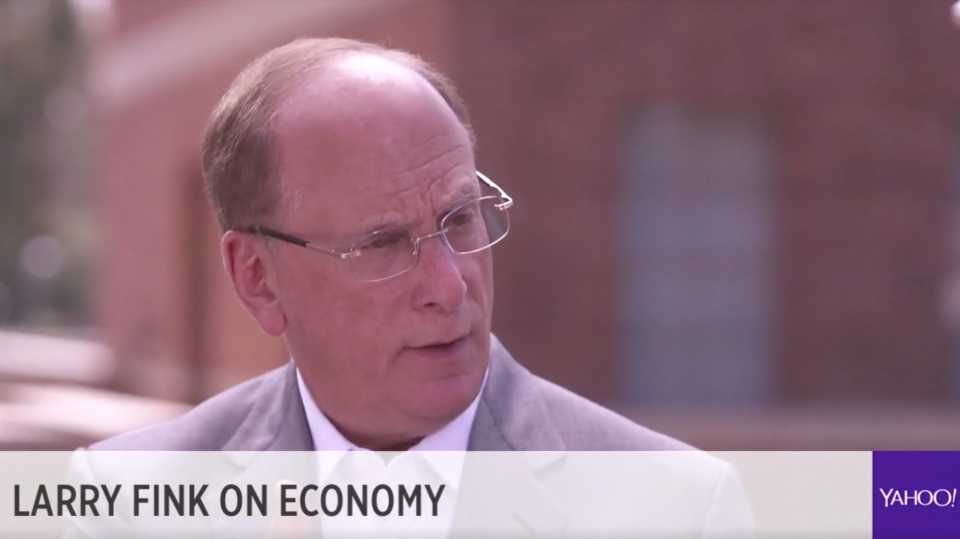Larry Fink: A flattening yield curve doesn't worry me
BlackRock CEO Larry Fink is not concerned about the flattening yield curve or any signal that it sends about the health of the U.S. economy.
“I believe the flattening of the yield curve is indicating to me that we still have record pools of cash,” Fink told Yahoo Finance editor-in-chief Andy Serwer in an interview on Thursday.
Fink explained that when you compare U.S. 10-year yields at 3.1% compared to German and Japanese 10-year yields — which were sitting at 0.63% and 0.06% as of Thursday, respectively — yields in the U.S. look quite attractive.
“And so that’s keeping the yield curve flatter than normal,” Fink said. “I don’t believe it has any indication of a recession. And I think it’s just the dynamism of global markets.”

Over the last several years, the yield curve has flattened, meaning the difference between short-term and long-term interest rates has declined.
The acceleration in flattening has quickened over the last 18 months as the Federal Reserve began raising interest rates and signaled a plan for more aggressive rate increases in the future, thus pushing shorter-term interest rates higher.
Longer-term Treasury yields have also increased as the economy has strengthened, but far less than the increases seen in yields for bills with a shorter duration. Hence, curve flattening.
And this dynamic has gotten increasing attention from markets as a yield curve inversion, or short-term interest rates rising above the level of long-term interest rates, is a dynamic that typically precedes recessions.

Federal Reserve chair Jay Powell said during his March press conference that while inverted yield curves have presaged recessions, he doesn’t see recession probabilities are particularly high right now.
Additionally, we’d note that this week the 10-year Treasury yield has made new seven-year highs, topping 3.1% for the first time since the summer of 2011, and the yield curve has actually steepened some.
Torsten Sløk, chief international economist at Deutsche Bank, also outlined that overall U.S. rates are likely being pushed higher by marginally decreasing foreign demand due to the decline in the dollar.
Elsewhere in his interview with Yahoo Finance, Fink said that while some forecasts like the Atlanta Fed’s GDPNow forecast project the economy could grow 4% in the second quarter, absent a continued acceleration in economic growth the markets and economy could be facing “an inflection point” in 18 months or so.
“I am not as fearful that we are at an inflection point with markets today, but I am more fearful out that 18 months,” Fink said.
—
Myles Udland is a writer at Yahoo Finance. Follow him on Twitter @MylesUdland

 Yahoo Finance
Yahoo Finance 
